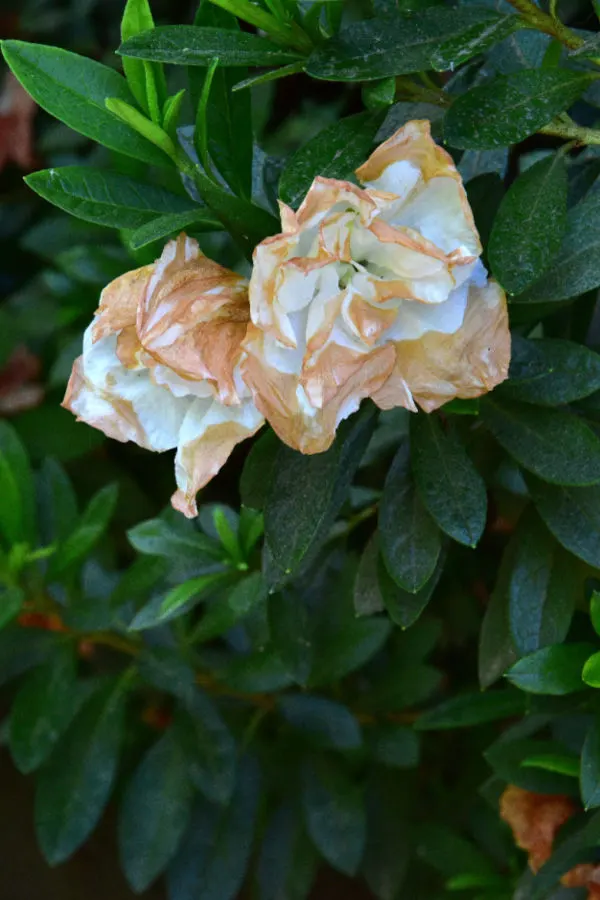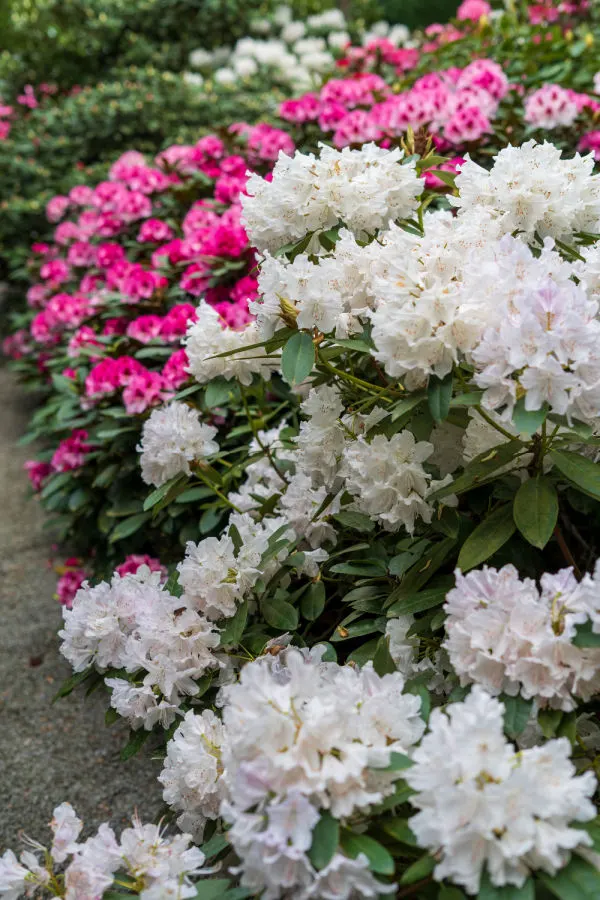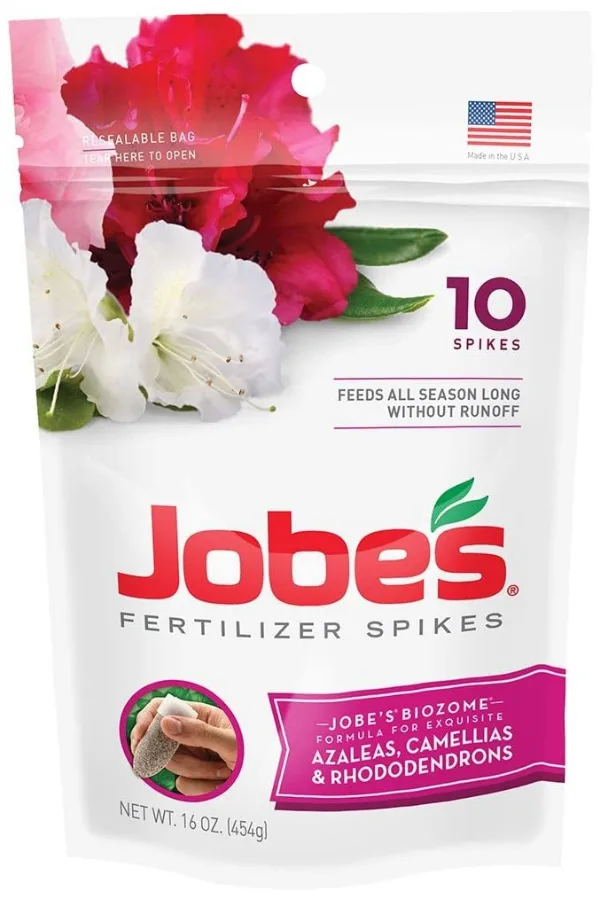Are you wondering why your azaleas are not blooming – or wondering how to get them to bloom more than they do?
Azaleas can be absolutely stunning when they are flowering with gusto. The early spring bush produces some of the most magnificent and brightest blooms around – so much so that the flowers seem to dance off the plant’s glossy green foliage.
But for many gardeners, getting the sometimes finicky shrub to produce those incredible flowers can be a challenge. One thing is for sure, it can be a bit depressing to watch azaleas under perform year after year. Especially when you know just how much beauty they can add to your spring landscape!
When azaleas fail to bloom or flower with a lackluster performance, the issue is usually one that can be remedied fairly easily. Yes, the shrub can be a bit demanding compared to other bushes that seem to flower at will. But diagnosing and fixing the issue is more simple than you might think.
In fact, unless the shrub is simply growing in a climate that isn’t conducive to blooming or even surviving, with an adjustment here or there, you can almost always bring them alive with blooming color in short order. With that in mind, here is a look at just why your azalea might not be blooming – and how to fix it!
Why Are My Azaleas Not Blooming? How To Get Azaleas To Bloom Big!
Pruning – Why Are My Azaleas Not Blooming?
One of the biggest culprits when azaleas fail to bloom is the timing of when the bushes are pruned. Azaleas form their spring blooms on the previous year’s new growth. More precisely, they form the buds that will create next year’s blooms on the branches that grow from late spring until fall – right after they finish blooming.
If you are pruning your shrubs in mid summer, early fall, late fall or even in early spring – your bush will not bloom. This is because you are removing the very wood where their new buds are forming.

When pruning azaleas, only prune right as or right after the shrub completes its bloom cycle in late spring. This will allow the azalea to grow new wood and buds for the following spring. One final note on pruning – azaleas do not require frequent pruning to flower.
In fact, the less you prune, the better. For this reason, light shaping after pruning is always the best course of action. If your bush does need major pruning, just know that it may take a few years to recover.
Sunlight
Another big issue that can cause an azalea bush to struggle with blooming is its location. Or more to the point, how much sunlight a bush receives exactly where it’s growing. Azaleas certainly need sunlight to bloom, but how much sunlight they should receive depends on your climate.
In the south, where temperatures can soar and the sunlight can be intense, it is better to plant azaleas where they will not get the hot afternoon sun directly. Instead, it is best to plant for morning or evening sun, and light shade the rest of the day.
In northern locations, the opposite is true. For cooler climates, azaleas should be getting more sun than shade. In addition, afternoon sun, which is less intense in the spring, is more than fine for the bush and can actually help it bloom even better.

For areas with cooler springs, aim for at least six to eight hours of daily sunlight. Not only will this help them bloom better in the north, it will also provide them more warmth and protection in the winter as well. For southern climates, try to plant your azaleas where they will receive four to five hours of sunlight at the most.
Soil Acidity – Why Are My Azaleas Not Blooming?
Another major reason azaleas bloom poorly or fail to bloom at all is the soil they are growing in. Azaleas are in the Rhododendron family – which all happen to grow better in a slightly acidic soil.
If soil acidity is an issue, the plant will usually also struggle to grow, not just bloom. Poor stem and branching growth, discolored and/or lighter foliage, and a lack of bud production are all indicators of a pH issue.
One of the fastest and easiest ways to test your soil’s pH level is with an inexpensive soil meter. This will give you an instant read on your soil’s acidity level. The good news is, once you know your soil’s pH level, it can be fairly easy to amend and correct it. Affiliate Product Link : pH Soil Test Instant Read Meter
For optimum growing and blooming, azaleas should be growing is soil that has a pH range of 4.0 to 5.0. If you test and the soil’s pH is above that, you can lower it in a couple of different ways.

Lowering pH – Why Are My Azaleas Not Blooming?
The quickest and easiest method to lower your soil’s pH is with aluminum sulfate. To use, simply spread the powder around the soil, and lightly rake and water in. Allow a few weeks for the aluminum sulfate to absorb and recheck the pH. Continue to apply until your pH is in the 4.0 to 5.0 range.
You can also use fresh green pine needles to help lower pH. Fresh needles buried a few inches in the soil around the bush will slowly leach more acidity into the soil. Fresh green needles are also wonderful to apply as a mulch.
They will eventually brown off, but when green, they will release acidity into the soil as they brown off. Dry, aged needles are good for mulching, but will not change the soil’s pH. Contrary to popular belief, aged needles are actually close to neutral when it comes to pH.
Fertilizing – Why Are My Azaleas Not Blooming?
Last but not least, when and how you power your plants with a dose of fertilizer can also play a big role in bringing out their blooms.
When fertilizing azaleas, it’s important first to select a fertilizer specifically made for the bush’s needs. Most traditional fertilizers with balanced nutrients are designed for non acid-loving plants. Because of this, they are not good for feeding azaleas. Unfortunately, they can also raise the pH level when used.
For best results, fertilizer spikes made for acid-loving plants are the way to go. Not only are they formulated for azaleas, they also release their power slowly, without the worry of providing too much energy to the bush. Affiliate Product Link : Jobe’s Fertilizer Spikes For Azaleas
As for when to fertilize, the best time is just as the azalea is completing its late spring bloom cycle. This will help to power new growth and buds for the following year’s blooms.
Do not fertilize prior to the bush blooming in early spring. This can actually cause azaleas not to bloom as all of the energy is put towards foliage growth and not in opening the buds. In addition, avoid fertilizing late in the season as it can cause unwanted growth that can leave it vulnerable to winter damage
Here is to getting your azaleas back on track and blooming again! Happy Gardening – Jim and Mary.
Jim and Mary Competti have been writing gardening, DIY and recipe articles and books for over 15 years from their 46 acre Ohio farm. The two are frequent speakers on all things gardening and love to travel in their spare time.
As always, feel free to email us at thefarm@owgarden.com with comments, questions, or to simply say hello! You can sign up for our free email list in the subscribe now box in the middle of this article. Follow us on Facebook here : OWG Facebook. This article may contain affiliate links.


